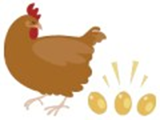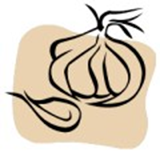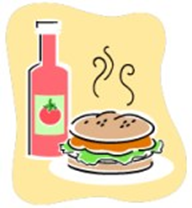3.6 Middle Ages Food and Drink
In medieval times poor people might survive on garden vegetables, including peas, onions, leeks, cabbage, beans, turnips (swedes), and parsley. A staple food of the poor was called pottage—a stew made of oats and garden vegetables with a tiny bit of meat in it, often thickened with stale bread crumbs.
Brown bread made from rye, barley, or oats was eaten in most homes on a regular basis. Manchet, or white bread made from wheat, was usually only eaten by the wealthy.
Fresh milk did not last long in the Middle Ages because there was no refrigeration. So, milk was made into cheese that had a shelf life of several months. Instead of fresh milk, some wealthier households used nut milk— ground almonds or walnuts boiled and strained through a sieve. The liquid collected was used as a substitute for milk in soups, main dishes, and desserts.

Many households raised chickens, ducks, or geese for eggs and eventually for meat, but only after they had stopped laying. These birds were far more valuable as egg-producers than as meat for the table.
The homes of the nobility often had “deer parks,” which were wooded areas where the gentry could hunt for sport and food. Peasants who poached game on these reserves might even be put to death if caught. One exception was rabbits—a peasant caught poaching rabbits was subject to only a small fine.

Spices were expensive! Wealthier people that had spices kept them locked up for safekeeping.

Honey was the most common sweetener in the Middle Ages. Although sugar was available in many forms in medieval times, it was used sparingly as more of a spice than a sweetener, especially for meat sauces. If you think it’s gross to have sugar in your meat sauce, think for a minute about ketchup and barbeque sauce—both of those have plenty of sugar in them.